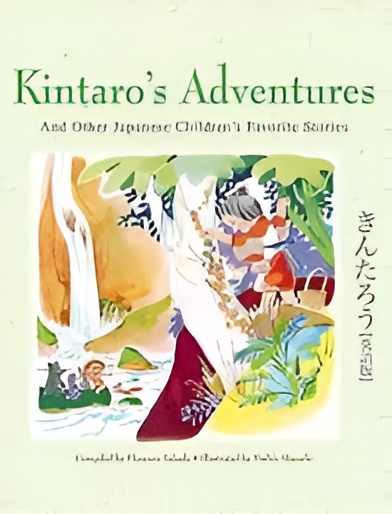Japanese children’s literature transcends mere storytelling, weaving rich tapestries of cultural heritage, ethical teachings, and evocative artistry. This treatise illuminates the top seven cherished Japanese children’s books that have endured the passage of time. Each narrative melds inventive flair with pedagogical depth, rendering them quintessential for youthful audiences across the globe.
Why Do Japanese Children’s Books Resonate So Deeply?
Japanese children’s literature distinguishes itself through a harmonious fusion of unpretentious narrative and profound cultural motifs. These tales often extol virtues such as reverence, benevolence, and an intimate communion with nature. Rooted in ancient folklore, they offer a portal into Japan’s storied past. Additionally, the vivid and imaginative artistry within these works captivates youthful attention effortlessly. Collectively, these attributes cultivate a global admiration for Japanese children’s literature.
Guri and Gura by Rieko Nakagawa

Synopsis
The adventures of two endearing field mice, Guri and Gura, who stumble upon an enormous egg, form the core of this narrative. Their endeavor to cook and share the egg epitomizes themes of generosity and camaraderie. The prose remains lucid, tailored impeccably for nascent readers.
Didactic Essence
Beyond delight, this volume imparts elemental principles such as collaboration and altruism, while nurturing inquisitiveness and critical thinking through the protagonists’ exploits.
The Tale of the Bamboo Cutter (Taketori Monogatari)

Historical and Narrative Significance
Esteemed as Japan’s primordial folktale, it chronicles the enigmatic Princess Kaguya, unearthed from a bamboo stalk. The plot interlaces fantasy with contemplations on humility and the fleeting nature of existence.
Cultural Resonance
This story embodies archaic Japanese ethos and mythos, serving as a poignant cultural beacon for young minds.
Momotaro, the Peach Boy

Plot and Pedagogical Insights
Momotaro, sprung from a peach, matures into a valiant figure who, aided by animal companions, confronts malevolent ogres. The tale promulgates valor, unity, and kindness.
Ethical Underpinnings
The narrative encourages the young to confront adversity with bravery while cherishing fellowship.
My Father’s Shop by Kazuo Iwamura

Narrative and Distinctive Traits
This tender chronicle follows a familial unit operating a modest shop, illuminating quotidian delights and familial solidarity.
Artistic Merit
The gentle and inviting illustrations render the story accessible and visually enchanting to youthful audiences.
Where’s Mom? by Taro Gomi

Story Structure and Linguistic Style
A straightforward hide-and-seek tale employing repetitive phrasing captivates toddlers, designed to foster vocabulary growth and sharpen observational acuity.
Developmental Advantages
This text supports foundational language development and cognitive maturation.
The Very Hungry Caterpillar (Japanese Edition)

Endearment and Educational Merits
Originally Western in origin, the Japanese iteration of this beloved classic enjoys widespread adoration. It educates on numerical concepts, weekdays, and biological metamorphosis.
Cross-Cultural Magnetism
Its universal motifs resonate transculturally, including within Japan itself.
Nontan Series by Sachiko Kiyono

Plot and Character Dynamics
Featuring the playful cat Nontan and his companions, these stories impart lessons in social interaction and emotional acuity.
Social-Emotional Enrichment
Through Nontan’s misadventures, children acquire skills in problem-solving, empathy, and cooperation.
Selecting the Finest Japanese Children’s Books

When curating literature, ponder the child’s developmental stage, proclivities, and literacy skills. Books adorned with vibrant illustrations and interactive elements captivate most effectively. Bilingual editions additionally facilitate simultaneous language acquisition in Japanese and English.
Advantages of Immersing in Japanese Children’s Literature

Engagement with these works bolsters intellectual faculties, emotional intelligence, and cultural literacy. They kindle creativity while imparting invaluable moral frameworks.
Where to Acquire Japanese Children’s Books
These volumes are accessible through digital marketplaces such as Amazon, specialized bookstores, and cultural institutions, as well as libraries with international collections.
What is the best platform for online Japanese?
Duolingo: Best for a game-like approach. NHK: Best for immersive learning through media. Rocket Japanese by Rocket Languages: Best for pronunciation practice. WaniKani: Best for learning kanji.
What are popular Japanese children’s books?

Below is a list of popular Japanese children’s books, some of which have been translated into English:
- 窓ぎわのトットちゃん Madogiwa no Totto-chan. …
- 魔女の宅急便 Majo no Takkyuubin. …
- Japanese Children’s Favorite Stories. …
- Yuko-chan and the Daruma Dolls. …
- Once Upon A Time in Japan. …
- 霧のむこうのふしぎな町 Kiri no Mukou no Fushigina Machi. …
- 夏の庭 Natsu no Niwa.
Recommended Japanese Shopping Websites
- Amazon.
- Rakuten.
- ヤYahoo Auctions.
- Y! Yahoo! Shopping.
- mmercari.
- Takashimaya.
- Mitsukoshi Isetan.
- Sogo & Seibu.
Where can I order books from Japan?
What to get and where to get them
- BOOK-OFF Online.
- Honya Club.
- Rakuten Books.
- TSUTAYA Online.
- Mu-mo SHOP.
Frequently Posed Inquiries (FAQs)
- Are Japanese children’s books accessible to non-Japanese speakers?
Indeed, numerous titles come in bilingual formats or translated versions. - Which age demographics benefit most from Japanese children’s literature?
Literature spans from infancy through early adolescence, with many classics suited for preschoolers and early readers. - Can these books facilitate language acquisition?
Indeed, particularly bilingual editions that nurture vocabulary and comprehension. - Do these tales carry universal themes?
Yes, motifs such as friendship, valor, and kindness transcend cultural boundaries. - Where might one procure authentic Japanese children’s books?
Online vendors like Amazon Japan, specialty bookshops, and cultural hubs offer genuine editions. - Do these narratives include moral instruction?
Frequently, they encompass core values like respect, honesty, and perseverance.
Conclusion
The top 7 favorite Japanese children’s books combine timeless storytelling, cultural richness, and educational value. These books are perfect for parents and educators looking to enrich children’s reading experiences. Embrace these stories to nurture imagination, learning, and cultural appreciation.